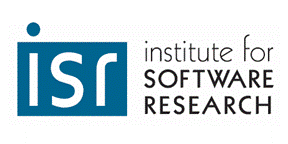
Institute for Software Research
School of Computer Science, Carnegie Mellon University
The IoT Codex: A Booko f Paper Engineering Techniques for
Authoring and Composing Embedded Computing Applications
Kristin Williams*, Jessica Hammer*+, Scott E. Hudson*
November 2020
This paper was presented at PLATEAU 2020:
The 11th Annual Workshop on the Intersection of HCI and PL
November 2020, Co-located with SPLASH 2020
End user programming (EU P) for the smart home has become widely available in commercial systems through services like If This, Then That (IFTTT). This approach uses graphical user interfaces (GUIs) to encapsulate control flow constructs like if-then conditionals in easier-to-use abstractions like form filling. Yet, non-experts largely do not use them to author their own recipes, and instead, naively rely on experts to compose those they douse (often risking their own domestic privacy and security). To support non-experts with authoring and composing embedded computing applications for their home, this work adapts paper engineering techniques to create alternative abstractions andi nteraction techniques in the form of a book: the IoT Codex. This book contributes a suite of paper mechanisms to convey the affordances of an EUP language for domestic IoT. These mechanisms constrain what expressions can be composed in the language by using both shape and kinematics. At the same time, they encourage non-experts to tinker and experiment with physical artifacts to develop programming expertise using material properties such as adhesives, wax, gold leaf, and others common to scrapbooks. In doing so, the resulting IoT Codex contributes physical computing techniques to aid non-experts in selecting appropriate EUP elements and remixing them to realize their own IoT ideas.
9 pages
*Human-Computer Interaction Institute, Carnegie Mellon University
+Entertainment Technology Center, Carnegie Mellon University
Return to:
SCS Technical Report Collection This page maintained by reports@cs.cmu.edu
School of Computer Science